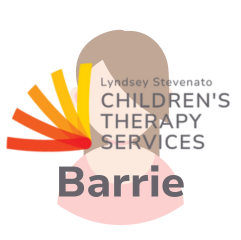“Aren’t you just playing?” This is a common question asked when people look at our Occupational Therapists (OTs) working with the children. Playing on swings, jumping on trampolines…what’s that all about?
Well, swinging and jumping are activities that tap into our vestibular system and the proprioceptive system. What’s that you say??
The vestibular and proprioceptive systems are parts of the sensory systems that our bodies use to help us function and interact with the world around us. You may know the 5 common senses: hearing (auditory), sight (visual), taste (gustatory), smell (olfactory) and touch (tactile).
However, our body has 3 additional senses:
- interoceptive (internal),
- vestibular (movement)
- proprioceptive (balance).
Vestibular (movement) tells us “how” we move and the Proprioceptive (balance) tells us “where” we are.
When children participate in activities like swinging, different parts of the brain get stimulated simultaneously and they get lots of information and awareness feedback when these systems start to work!
For instance, swinging can help children develop skills such as spatial awareness, balance, rhythm and muscle control. As they swing, they are keeping their core tight so they don’t fall off, pumping their legs which requires coordination and adjusting their body to keep their balance as well as enjoying that cool, floating sensation when they tip their head back! Even a quiet moment on a swing can help a child regulate their sensory system, remain in a calm state and help them develop the ability to adapt to different sensations.
The type of swinging motion can also affect a child in different ways. Spinning on a swing has quite the opposite effect of swinging back and forth. Spinning stimulates and invigorates the vestibular receptors, whereas linear swinging (back and forth movement) can calm an overstimulated child.
So what kind of swinging would you choose for your child? It depends on what results you are seeking: are you looking to help them wake up and be energized? Or are you looking to help them be calmed and relaxed? If you want to get them going in the morning, seek a swinging activity that involves some spinning, or varied motions to get their brain stimulated. If you are wanting them to get ready for bed, seek a swinging activity that uses back-and-forth and rhythmic movements to help their brain/body calm with the repetitive motions.
Who knew a swing could have such an impact on our bodies and our emotions!?! So next time you see your OT using the swing with your child, know that we are really working on improving sensory processing skills. Using these activities will build and strengthen certain skills while also having a ton of fun while we do it 😉




































